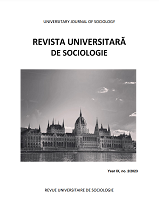SOCIOLOGICAL PERSPECTIVES OF UNDERSTANDING THE URBAN PLANNING ACTIVITIES: THE CONVERGENCE PRINCIPLES OF SPECIFIC INTERESTS
SOCIOLOGICAL PERSPECTIVES OF UNDERSTANDING THE URBAN PLANNING ACTIVITIES: THE CONVERGENCE PRINCIPLES OF SPECIFIC INTERESTS
Author(s): Gabriel Nicolae PricinăSubject(s): Social Theory, Rural and urban sociology, Sociology of Culture
Published by: Ediktura Beladi
Keywords: urban sociology; urban planning; population; urban development; quality of life;
Summary/Abstract: This article highlights the complexity of urban planning efforts in contemporary cities. The heterogeneity of urban life is illustrated by a multitude of scientists from different fields: architecture, construction, urban planning, anthropology, sociology. The opinions expressed have provided and still provide diverse analytical perspectives, which respond to certain specific aspects of urban life and stand out for their theoretical validity at a separate level, but which, as some sociologists concerned with studying the urban environment have pointed out, can only ensure functional unity through their integration into a unitary whole. Thus, the selection of authors cited in the article is characterized by the tendency to explain urban life from the perspective of the factors that characterize the various urban dimensions that, in one way or another, influence the social life of cities. This theoretical perspective is associated with the requirements of the present related to European directives, environmental protection requirements and the high competitiveness specific to the global world. In an evaluation stage of the current situation and the priorities related to the urban planning of the city of Craiova, a sociological survey was carried out in which items related to the investment needs in urban regeneration activities were included. The obtained results highlighted aspects that enjoy the appreciation of the population, but also aspects flagged as deficient. In addition, data was collected regarding the hierarchy of factors that contribute to the formation of citizens' opinions. There were 732 questionnaires collected distributed in nine areas of the city, applied to a group of respondents balanced in terms of distribution according to gender, age, level of education and occupation. The conclusions of the study are integrated into the conclusions of the present article, which contain the ideas arising from the theoretical documentation and the comparison with the perceptions expressed by the citizens participating in the sociological survey.
Journal: Revista Universitară de Sociologie
- Issue Year: IX/2023
- Issue No: 2
- Page Range: 206-212
- Page Count: 7
- Language: English

